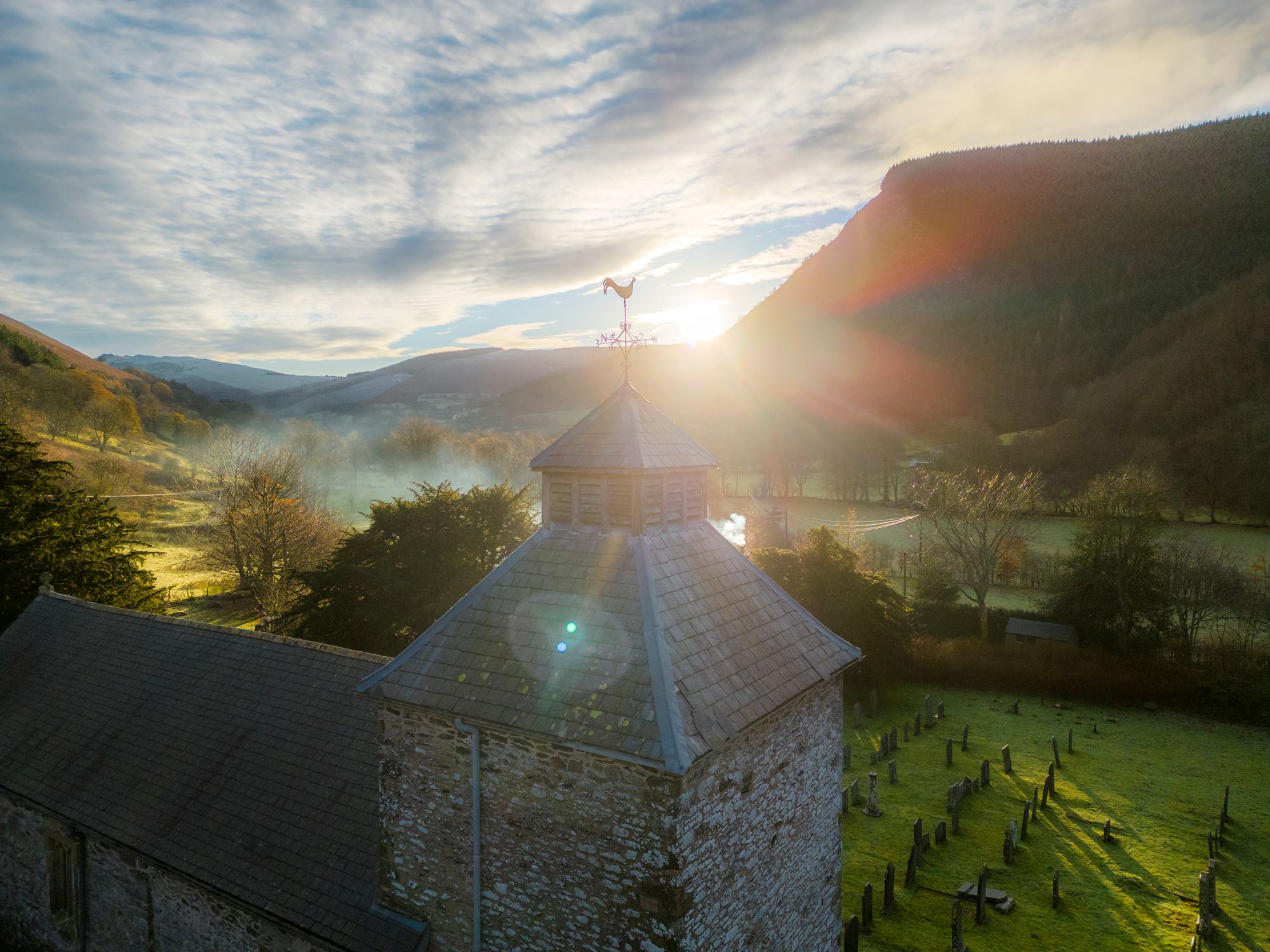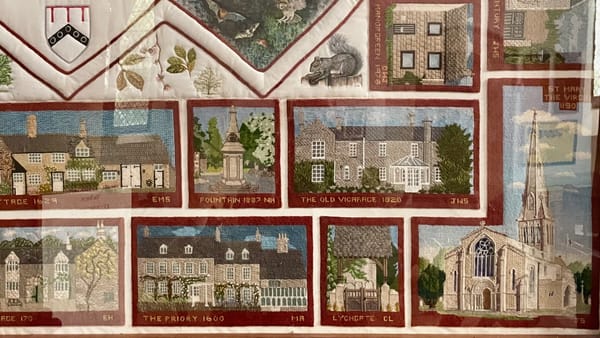
14 December 2022
Wales

Last week I travelled from Llandaff Cathedral through the heart of Wales to a place of pilgrimage at St. Melangell's shrine. I had booked into the shepherd's hut at the shrine centre. My aim was to get a little time to work on a chapter on my book.
This really is a magical place - more realm, than place. Because of its location - at the head of a glacial valley, surrounded by hills full of pine and conifer - it has the atmosphere of the Swiss Alps.
There is a time slip, of course, as you turn into the single lane track.
Travelling along the lane to St. Melangells is an act of filtration, a redaction of modernity. The pressing matters of the day are pared down with each passing turn. The landscape provides a correspondence with the transition of time - the valley bottoms out into flattened serenity as the Berwyn hills rise like embattlements pitched against any sense of doubt as to the horological magic at play.

When I arrive at St. Melangells, I’m welcomed by Christine and Karen. They tell me that it’s shooting season. The shots that ring out temporarily break through the sanctity of this place. It was to be a hunting expedition in the C7th that helped define this little hamlet.
Legend has it that Brochwel the Prince and his party were hunting hares and came across a young girl in a copse, praying with a hare hidden in the folds of her clothes. The dogs would not approach and the horses were unsettled. Brochwel was told that this was the first human contact for the girl who had lived in the copse for 15 years.

The girl was an Irish princess who was estranged from her country. Brockwel, thought it a miracle and granted the girl sanctuary giving her the land where she established a church and convent. Melangell became the patron saint of hares and her shrine is one of the most evocative places that spring from the times of pilgrimage - it might have been ported from an apse in Rome.

Remarkably, the shrine has survived - it was found in chunks around the church fabric - post reformation, and re-built. It has the feel of a shrine in a Roman church.

I'm not religious, but I'm fascinated by places that tug on human emotions, whether it be a distant story of human endeavour or a surviving latch from a skilled hand centuries ago.

The church sits on an oval Bronze Age site which is guarded by a sentinel of yew trees - many of them reaching back to the foundation of the original pre-christian site. So the people that wandered these hills before Christ was born - saw the seeds of some of the yew trees that survive today.
And what trees they are! Each with their own distinct character - and one with the look of a human being set within its folds.

I did find the time in the shepherd's hut to finish my chapter on 'Light', but not much time - with the remarkable landscape and church to tempt me nearby.


This is the last entry
More about this Digest:


Can you help support me on my journey by becoming a Member?
Help keep Woody on the road and support the Genius Loci Digest.
Explore th Benefits
Can you help support me on my journey by becoming a Member?
Help keep Woody on the road and support the Genius Loci Digest.
Explore th Benefits







Member discussion